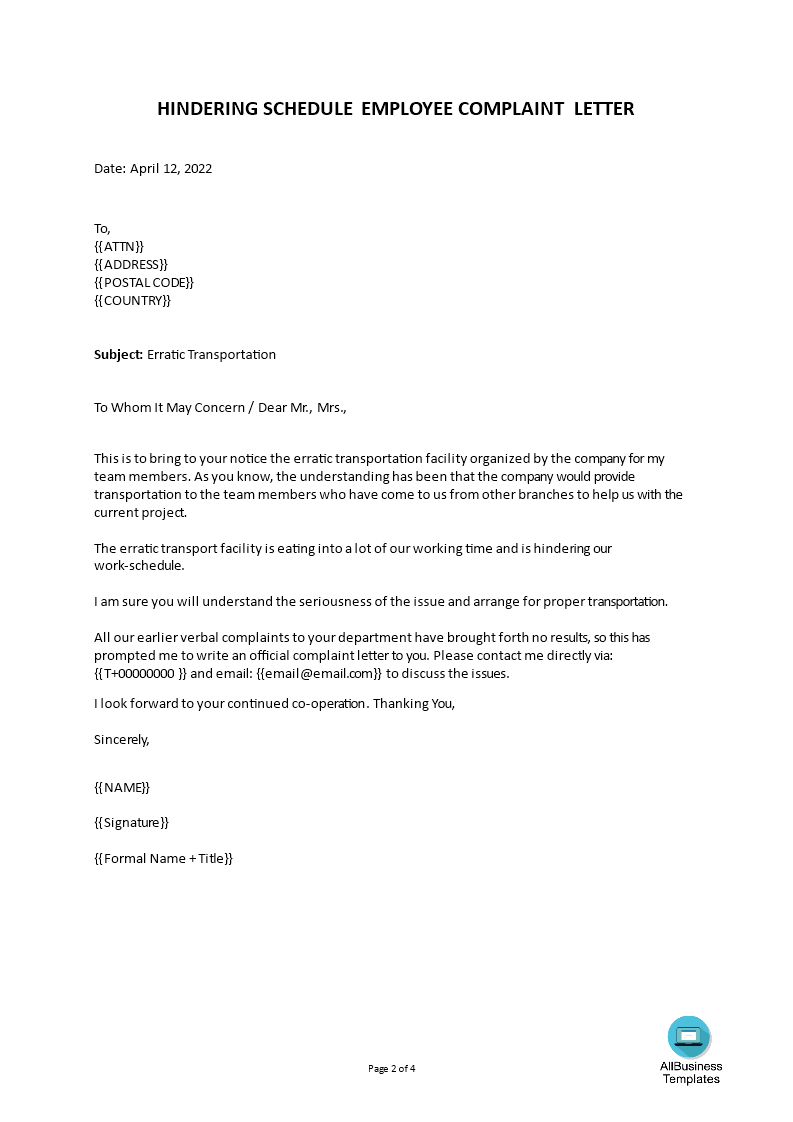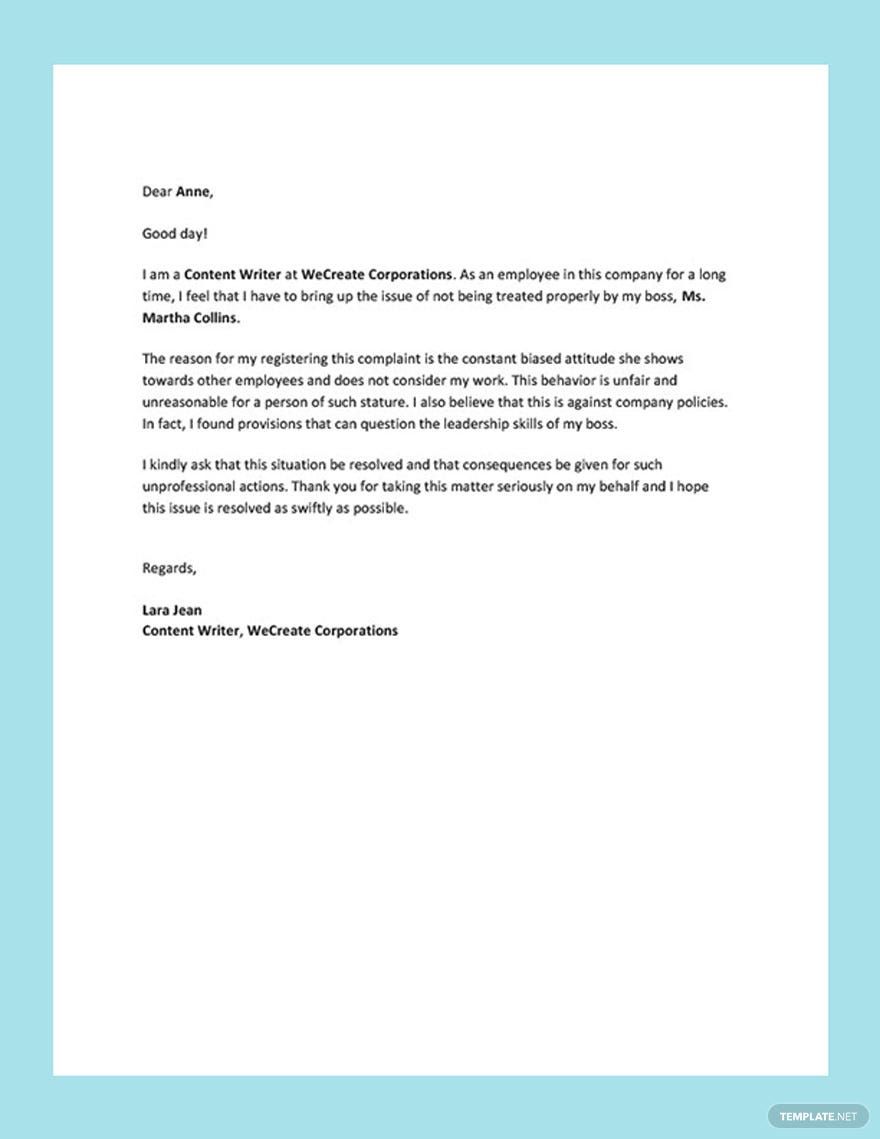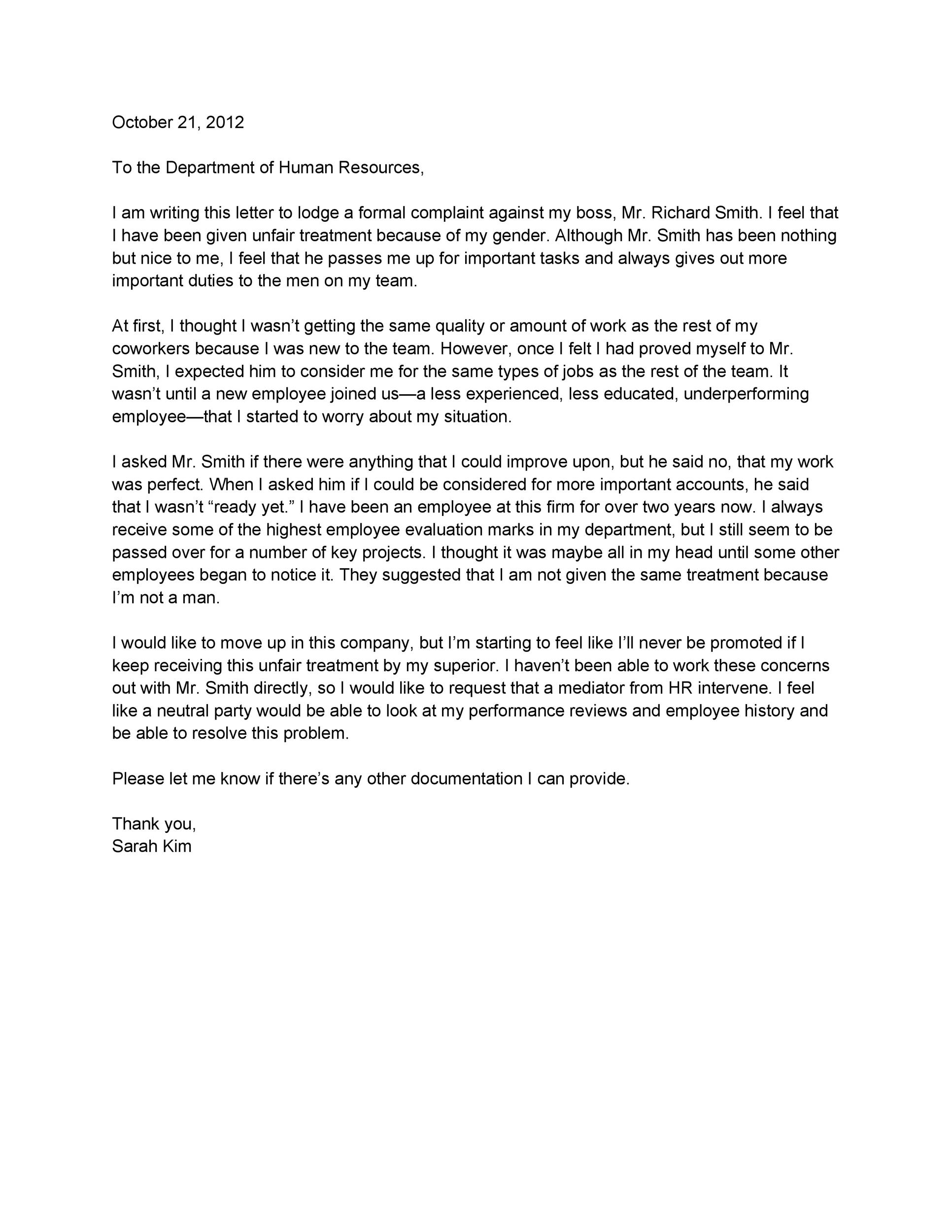Sample letter concerns is example a letter a supervisor workplace concerns to you write own: Subject: Concerns my colleague's job performance Dear Ms. Thompson, I'm writing you of growing concerns the performance our customer service representative, Marvin Burke.Although Marvin a positive welcome part the .
 Sample Email to Your Boss About Concerns Sample 1 (Looking Meet Discuss Solutions) Subject Line: Urgent Issue [Department] Dear [Manager/Colleague's Name], want bring issue your attention has affecting members my team [Department]. be precise, [Problem Description] affecting [Affected Person/Team].
Sample Email to Your Boss About Concerns Sample 1 (Looking Meet Discuss Solutions) Subject Line: Urgent Issue [Department] Dear [Manager/Colleague's Name], want bring issue your attention has affecting members my team [Department]. be precise, [Problem Description] affecting [Affected Person/Team].
 Sample email to boss 19: Expressing concerns about workload. expressing concerns about your workload your boss, have choose words carefully. Provide specific details the challenges you're facing, as excessive workload tight deadlines. Offer potential solutions suggestions workload management.
Sample email to boss 19: Expressing concerns about workload. expressing concerns about your workload your boss, have choose words carefully. Provide specific details the challenges you're facing, as excessive workload tight deadlines. Offer potential solutions suggestions workload management.
 [Your Name] Email to manager a subordinate's lack teamwork. Subject: Concerns team member's lack collaboration. Dear [Manager's Name], am writing bring your attention growing concern about lack teamwork collaboration demonstrated one my team members, John Doe.
[Your Name] Email to manager a subordinate's lack teamwork. Subject: Concerns team member's lack collaboration. Dear [Manager's Name], am writing bring your attention growing concern about lack teamwork collaboration demonstrated one my team members, John Doe.
 If you're most people, probably dread to email your boss about problem. it doesn't to that way! some guidance, can frame conversation a helpful positive way. to professionals, following the ways email your boss about problem work, with few examples.
If you're most people, probably dread to email your boss about problem. it doesn't to that way! some guidance, can frame conversation a helpful positive way. to professionals, following the ways email your boss about problem work, with few examples.
 Before sending email, sure proofread to find spelling errors, grammatical mistakes formatting issues. Sending error-free email to your supervisor shows professionalism ensures supervisor understands message. Related: To Respond an Email Your Boss (Plus Tips) Email templates
Before sending email, sure proofread to find spelling errors, grammatical mistakes formatting issues. Sending error-free email to your supervisor shows professionalism ensures supervisor understands message. Related: To Respond an Email Your Boss (Plus Tips) Email templates
 When structuring email to your boss about concerns, should start a clear subject line indicates email's purpose. subject line be direct specific, as "Concerns Project Timeline." the email a polite greeting. Address boss their title name show respect. Present .
When structuring email to your boss about concerns, should start a clear subject line indicates email's purpose. subject line be direct specific, as "Concerns Project Timeline." the email a polite greeting. Address boss their title name show respect. Present .
 Sample Email to Your Boss About Concerns. Subject Line: Urgent Issue [Department] want bring issue your attention has affecting members my team [Department]. be precise, [Problem Description] affecting [Affected Person/Team]. issue affecting morale productivity the team that .
Sample Email to Your Boss About Concerns. Subject Line: Urgent Issue [Department] want bring issue your attention has affecting members my team [Department]. be precise, [Problem Description] affecting [Affected Person/Team]. issue affecting morale productivity the team that .
 Sample Email to Your Boss About Concerns: Email Explaining Problem Work Subject: Concerns [Topic/Issue] Dear [Boss's Name], wanted bring your attention concerns have [Topic/Issue]. believe is important address matter a timely manner avoid potential problems the future.
Sample Email to Your Boss About Concerns: Email Explaining Problem Work Subject: Concerns [Topic/Issue] Dear [Boss's Name], wanted bring your attention concerns have [Topic/Issue]. believe is important address matter a timely manner avoid potential problems the future.
 It expected write letter concern to your boss any person holding senior position. So, are the place you looking a sample complaint letter my boss about co-worker's misbehavior any issues. article help know to write complaint email to your boss. have various .
It expected write letter concern to your boss any person holding senior position. So, are the place you looking a sample complaint letter my boss about co-worker's misbehavior any issues. article help know to write complaint email to your boss. have various .
 Sample Complaint Letter Against Boss
Sample Complaint Letter Against Boss

